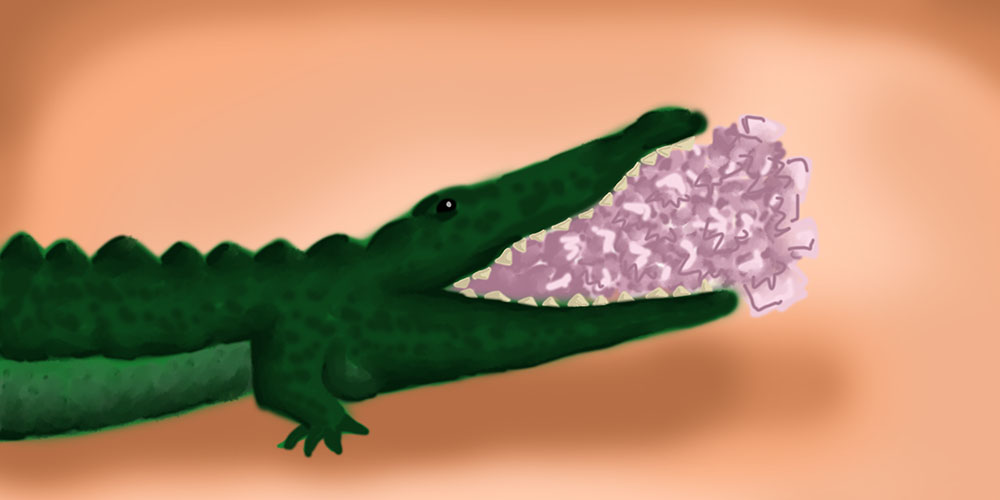Once upon a time, there was an alligator who wanted to be a purse. He got his wish, but he was still hungry. He opened his mouth and the department store worker stuffed tissue in his mouth. This was a story I wrote, and my now late aunt borrowed, for a class she was taking at college. She was supposed to write a fable, something like one of Aesop’s fables or Kipling’s “Just So Stories,” but she couldn’t think of anything. My mother suggested she use my tale of the alligator, from one of my eighth-grade homework assignments. It was 1975, and my aunt had seemingly recovered from an illegal abortion that had almost killed her a few years earlier.
My aunt was going to college to become a special education teacher. She wanted to work with learning disabled and the developmentally delayed children and was majoring in psychology. She never became a teacher, as was the case with all of her plans. Something always went astray, whether it was her education, her career, her love life, or her retirement. My family blamed her frustrations on some deeply-seated trait, like a bad attitude. What other explanation could there be, since all the rest of us had been able to secure some modicum of happiness, through hard work, diligence, our vaunted educations? I wonder if the answer lies in the circumstances she was dealt, consequences she could not have anticipated. Perhaps she should have anticipated them. Does that mean she deserved them?
These are the questions I’ve been asking myself with the recent news of Republican efforts to re-criminalize abortion. Their so-called heartbeat bills, and bans on abortions after six- or ten-weeks of gestation, will surely be tested in the newly conservative Supreme Court. They might even win approval, and an overturning of the Roe v. Wade precedent, much to the delight of right-wing forces. Even better, there won’t be any unintended consequences this time, because we already know what happens when abortion is outlawed: death, sickness, long-term disease. We’ve seen it before, to say nothing of the consequences President Trump and others have suggested: imprisoning women for seeking the procedure.
What we may not yet understand is how the consequences can extend into a woman’s family. For beyond the damage done to my aunt’s mind and body, her abortion cut deep into my parents’ marriage, and by extension, my sister and me. The story of my aunt’s abortion is about what happens when the most private matters are forced into a public realm, where the details can be debated, become a source of resentment, and ultimately infect the merely peripherally-involved in the procedure.
My aunt’s abortion occurred sometime in the late 1960s when abortion was legal in California, but legal abortion was inaccessible. In other words, my aunt faced a situation much like an estimated 11 million American women deal with today, according to The New York Times, because state regulations and other factors have forced the closure of local abortion clinics. In Wyoming, for instance, 96 percent of women live in a county without an abortion clinic; in Minnesota, the number is 55 percent, according to the Guttmacher Institute. This trend is most pronounced in the south — Alabama is at 59 percent, Arkansas is at 77 percent, Mississippi at 94 percent — effectively outlawing a facet of women’s health care that is supposedly constitutionally protected.
My aunt was in her late 20s, drifting and heartsick over the death of her father, whom she adored, when she likely got pregnant. She was living with her mother and had already been married and divorced. When she worked, it was as a secretary or a “Kelly Girl,” with the Russell Kelly Office Service. Her mother complained to me and my father that my aunt often dashed out of the apartment after having nothing more for breakfast than a glass of milk with the era’s equivalent of protein powder, then known as Carnation’s Instant Breakfast.

This was not the future anybody had envisioned for my aunt; she was the “good times baby,” born as the war boom was lifting families like hers out of the Depression. Before she was born, my father recalled, the family frequently couldn’t “make” the rent, so they moved. They moved often, sometimes in the middle of the night. By the time my aunt was born, though, the war boom had lifted the household up and out, into better neighborhoods and long-term leases. My aunt went to summer camp; I found her letters home. Her Sweet 16 party was held in Las Vegas. A friend remembers seeing my aunt pull into the driveway of the family home sometime after she graduated from high school. She was driving a convertible and wearing a fur coat.
I remember her being pregnant, with an extended belly. At the time she told me not to squeeze her too hard because she had a hernia. What I didn’t know was that she had gone to my parents about the pregnancy, and my father had offered to adopt the baby once it was born. My mother agreed, but not to my father’s conditions: that the baby could never know who its real parents were. My mother said this was impossible, as my sister and I were old enough to know where babies came from, and that this new sibling obviously wouldn’t have come to us in a regular way. For about a week, after I had gone to bed, I heard my parents arguing, although I didn’t know what it was about. The actual words did not travel past their locked bedroom door. But the anger and frustration, the volume of their fights, seeped into my room, on the other side of the wall.
My mother said my aunt took matters into her own hands and got an abortion. Based on what I know about family history, I’d say this was between 1966 and 1969. The abortion was somehow botched, however, and she carried the fetus to term. It was stillborn, which must have been a relief to my parents, and possibly to my aunt. I don’t know, because this is my mother’s version of events. She told me this only long after she divorced my father, as she spilled a bunch of family secrets, to convince me that I could recover from my own failures, whatever they might be. My mother never said a critical word about my aunt over this business, yet she was remained incensed that my father had been unreasonable during this episode. It haunted their marriage for years afterward.
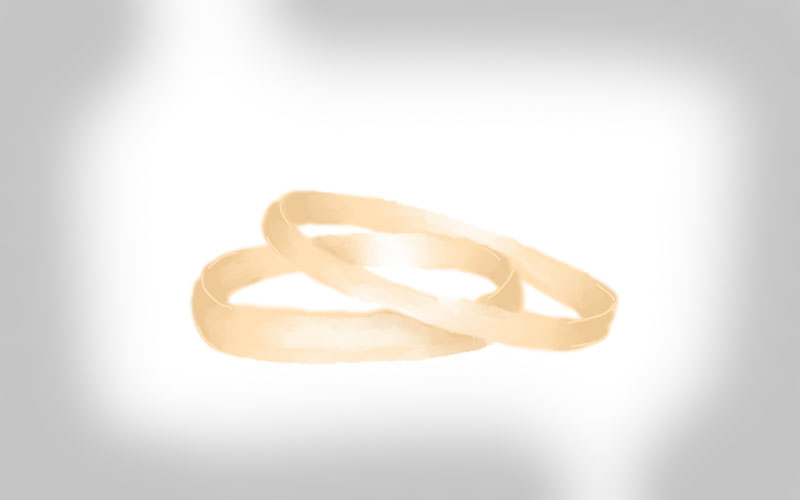
My father told another story after my mother died. He said my aunt asked for money for an abortion. He gave it to her, during a secret meeting on a cliff road outside our neighborhood. A neighbor saw my father with a much younger, attractive woman, and told my mother. My father said he was able to talk my mother down from this gossip, although given what happened later in their life together, this too likely amounted to another cut against their marriage. My aunt, meanwhile, still had to get an abortion. He said she went to an “animal doctor,” but I acknowledge that my father was not the most reliable narrator of family history. I don’t know whether he was being derisive or figurative.
One morning, my grandmother called my father from the hospital to say my aunt had a kidney infection. Or that is what he told us, me and my sister. This must have been the genesis of peritonitis, an inflammation of the abdominal lining that affected her lungs, an illness that never seemed to end. Peritonitis is sometimes caused by cirrhosis of the liver, but that wasn’t likely in my aunt’s case. She rarely drank to excess and was never diagnosed with a liver problem. That she became ill long after, it seemed to me, the botched pregnancy; and that my father’s version of events was so different from my mother’s, could mean that my aunt had not one, but two illegal abortions. I realize all this in retrospect, as I try to put all these disparate accounts together.
Abortion was made nominally legal in California in 1967 under the Therapeutic Abortion Law. Women could obtain an abortion after a committee of medical professionals deemed the procedure necessary for their health. That committee sometimes included a sometimes a district attorney, to ensure that any claims of rape or incest were real. An estimated 100,000 illegal abortions were being performed in the state annually before the law’s passage, according to a remembrance of the legislation published in 2013 in Real Clear Politics. This didn’t include abortions performed in Tijuana, where women “were taking their lives in their hands,” according to state Supreme Court records. Stopping these “criminal” abortions, as a landmark state Supreme Court case termed them, was one of the primary motivations behind the passage of the 1967 law. “Induced illegal abortion” was “one of the most important causes” of “infertility and disease,” according to a 1966 study cited in the Supreme Court decision.
But once therapeutic abortion became law, women continued to seek the procedure clandestinely, because so few met the law’s standards. For instance, only 600 legal abortions were performed in California in 1967, according to an archive of state abortion statistics. Meanwhile, Patricia Maginnis, known for creating the first list of clandestine abortion providers in the country, continued giving her classes to women on how to give themselves abortions, according to a 2018 profile of Maginnis in Slate. The original state law, from 1850, still proscribed a five-year prison sentence for women who “submit or solicit” an abortion. That law wasn’t overturned until 1969, when the state Supreme Court called the state’s statutory tangle of laws “an invalid abridgment of women’s rights,” effectively making abortion legal in California.
However — and wherever — my aunt obtained her abortion or abortions, the safest, now widely used method, vacuum aspiration with a Karman cannula, had yet to be invented. The Los Angeles Times obituary for the cannula’s inventor — a psychologist who served a two-and-a-half-year state prison sentence in the 1950s for performing an abortion in which the woman died — places its invention in the early 1970s and its first demonstration in 1972. Current medical literature discusses the possibility of sepsis after abortion, but not peritonitis. Yet peritonitis caused by abortion was “of the greatest interest in Finland,” according to a 1950 article in a Scandanavian medical journal on how to treat the infection.
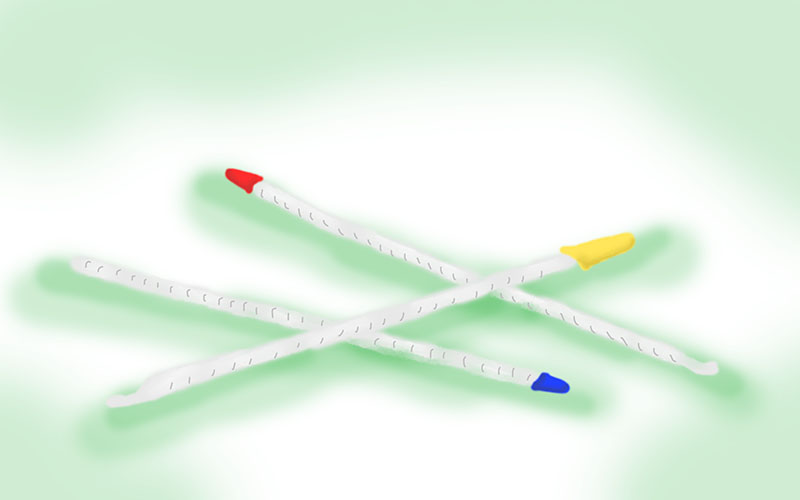
By 1970, my aunt’s peritonitis had affected her lungs. I know this because I watched her undergo respiratory therapy in the apartment she shared with my grandmother. She had to use a nebulizer and do exercises. One called for my aunt to rest on a slanted board upside down, and beat at her lung cavities with her hands. My grandmother was constantly washing the nebulizer equipment, in soap and scalding water. I remember the pride she took in completing this task, as though there was finally some way she could be useful. The equipment had to be perfectly sterile, she said because my aunt’s immune system was “like a baby’s.’’
I can place this routine so well because it was during the time I was frequently shipped out of the house; my mother had what was then called a “nervous breakdown” that year, and was institutionalized for several months. Aside from my aunt’s abortion, several other domestic disasters had befallen us, and finally, they threw my mother into a cycle of manias she could not come back from. Once released from the hospital, she was profoundly depressed, seemingly dedicated only to her cigarettes, coffee, and somnambulance. At least this is how my father saw it, but there was a lot more to her recovery. From what I witnessed, it was tedious and difficult. By her telling, it was inevitable. The retreat of her hormones, or menopause, did the trick, she told me. I also think divorcing my father helped, but again, that is another story of consequences, intended and otherwise.
I can’t put an exact date on my aunt’s recovery. Sometime in the early ’70s, she was well enough to attend the annual 4th of July party my parents’ best friends gave each year. Their daughter was scandalized, slightly, when she walked in on my aunt and a young law student, making out in the bathroom. They were fully clothed and probably no further than first base, and the daughter has admitted to me over the years that she’d always been taken aback by the kind of woman my aunt was. At the height of the women’s movement, our mothers were still housewives. Their uniforms consisted of jeans, blouses and sports shirts, Keds sneakers; their regimens seemed governed by cigarettes, coffee, housework and carpooling. My aunt was the first woman we children knew to be glamorous. She wore jewelry, a gold necklace I remember, with a cloisonne locket. I never saw what was inside that locket. I watched her powder her nose from a compact; she was the only woman we knew who wore makeup. She dressed in silk blouses and fancy slacks. She wore high heels. She occasionally passed down some of her wardrobe to me, though the clothes never looked as good on me as they did on her.
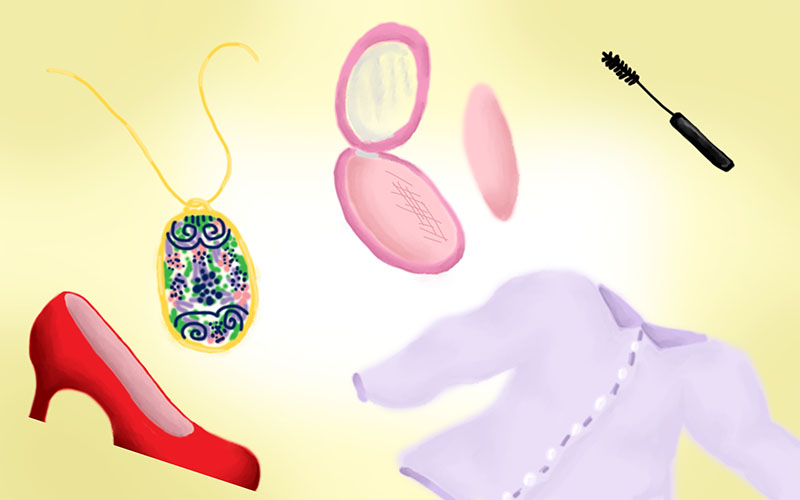
My aunt also moved to her own apartment around this time and enrolled in junior college. She later transferred to a state university, but ran into trouble with finishing her degree. A friend got her a job as a “building engineer,” or janitor, which she worked nights. My aunt and mother remained friends: they played pranks and backed each other in marathon political arguments with my father. While I was in high school, as my mother explained how birth control pills worked, my aunt showed me hers. They were prescribed to alleviate pain from ovarian cysts, she said. She would have been in her early forties by then, and I remember her dating occasionally. But she never remarried or found a partner serious enough to tell us about.
I was always excited when my aunt came over. She didn’t bring gifts, but she always had some adventure to tell, like the time she went to a Hollywood party. But it was not a real Hollywood party, she said; it was someone’s idea of a Hollywood party. A hollow Hollywood party, with all the sex and drugs, but no celebrities. When they weren’t fighting over politics, my father and my aunt spoke openly, even whimsically, about the travails of their extended, immigrant family: money problems, life-changing illnesses, petty jealousies, divorce and domestic abuse, even mild vendettas. But the abortions never made it to these dinner table discussions.
In 1981 my parents divorced, sundering the link between my aunt and my mother. My mother remembered her sister-in-law as “fun.” When my father underwent heart bypass surgery, my aunt volunteered to prepare his meals, but they argued over whether he should pay her once he was on his feet. They argued over money a lot, especially five years later, when their mother died. I cleaned out my father’s apartment some 17 years later, once he was moved to assisted living. I found all the documents, including the letter my aunt wrote, demanding my father pay her more than $100,000. She had carefully calculated the sum, based on the one-time worth of the then-defunct family business. But there was nothing left. My grandmother had lived on it, and then my father went into debt. I was supporting him by then.
Some cousins were upset by her behavior after my grandmother died. “This is how she mourned her mother,” one cousin said bitterly: with a textbook and a highlighter so she could keep studying. She was always taking a class. Later she appeared at my father’s apartment, where my grandmother had lived, and confiscated what she believed to be hers. The rap against my aunt, as some relatives put it, was that she was negative, spoiled and self-centered; that she didn’t think she had to work like everybody else, because she was better than everyone else. Once, she said, her parents told her she couldn’t be friends with someone from school because the girl’s family did not have as much money as her family did. “And you know something?” she told me. “They were right.”
“I’m sorry her life was not so happy,” another cousin wrote to me after my aunt’s death, about two years ago.
As I’ve tried to piece my aunt’s life together, and whether her illegal abortion(s) contributed to her unhappiness, I’ve had to confront the good and the bad about my aunt, who must have always felt uncomfortable in her skin, given her circumstances. My mother recalled that on the day her parents were to meet my father’s family, her future in-laws were late because they were arguing over what my aunt, then 19, should wear to the dinner date. My aunt tried to become a model in New York; one photograph from her portfolio is all that I can salvage from that effort. Sometime during the 1960s, she tried becoming an artist; the center of her bedroom at my grandmother’s apartment was a charcoal drawing she worked on, seemingly forever. Eventually, it was framed and hung on the wall, but I had to ask her what the small black and white square in the middle of the picture depicted. It was: a man and a woman embracing.
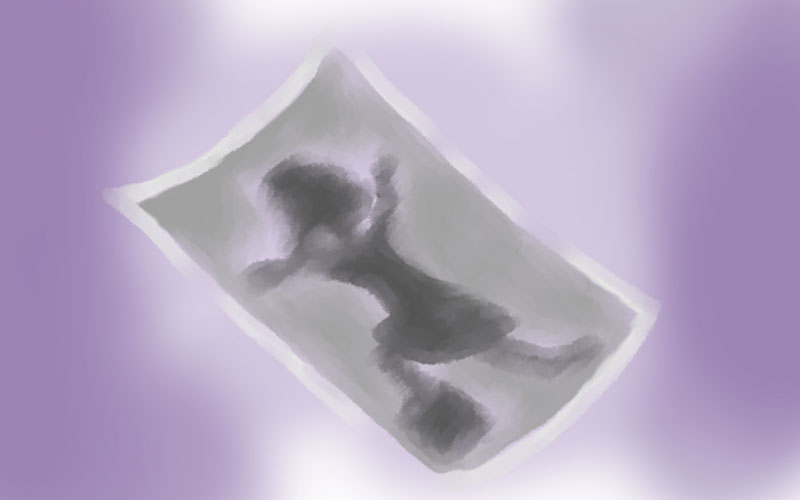
When my grandmother was living with my father in her late 80s or early 90s — we never knew how old she was — my aunt said my grandmother beat her as a child. I found this hard to believe since my grandmother had loved me as only a grandmother could. My father had said many times over what an extraordinary mother she had been to him as a child, how hard she worked to shepherd him through a difficult childhood. My aunt was nuts, my father said; others said she was delusional. She “kind of lost her mind after the peritonitis,” another cousin told me. She died at age 78 of heart arrhythmia, largely because she wouldn’t treat it. She didn’t believe she had the money to do so.
When I think about my aunt, I wonder whether her story will become the stuff of vintage documentaries: the kind where the filmmaker looks back at a seemingly unbelievable era in our nation’s history, when we didn’t understand what we take for granted now. A long time ago, this was a country where women could rarely decide their own fate. If any woman dared to challenge this system, take the course of her life into her own hands, the course of her own body, they would suffer in a myriad of ways. I use this cliché of “myriad” because we are always finding new ways to punish women in our society; the ingredients of shame, loss of privacy, and control over the body are always the same, but the various bureaucracies and intrusive moves and regulations seem to multiply, if not mutate. Now my aunt is one of those fables that grow out of these cycles, and fables are open to interpretation. You have the freedom to choose yours. •
